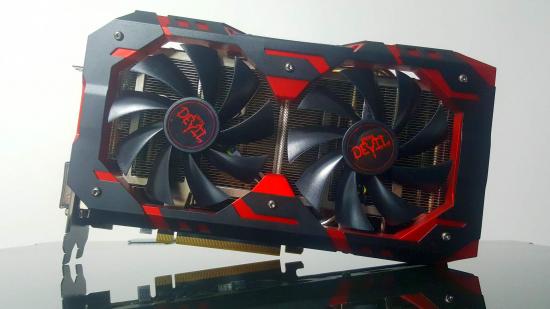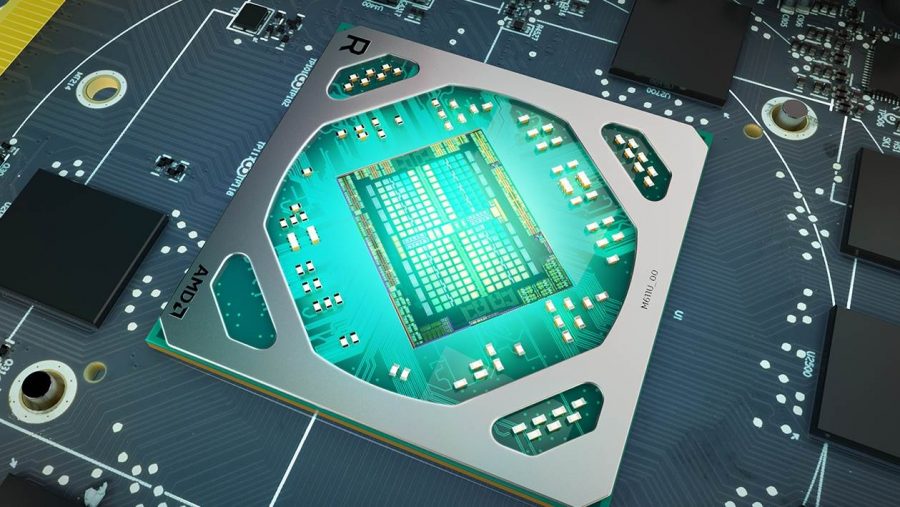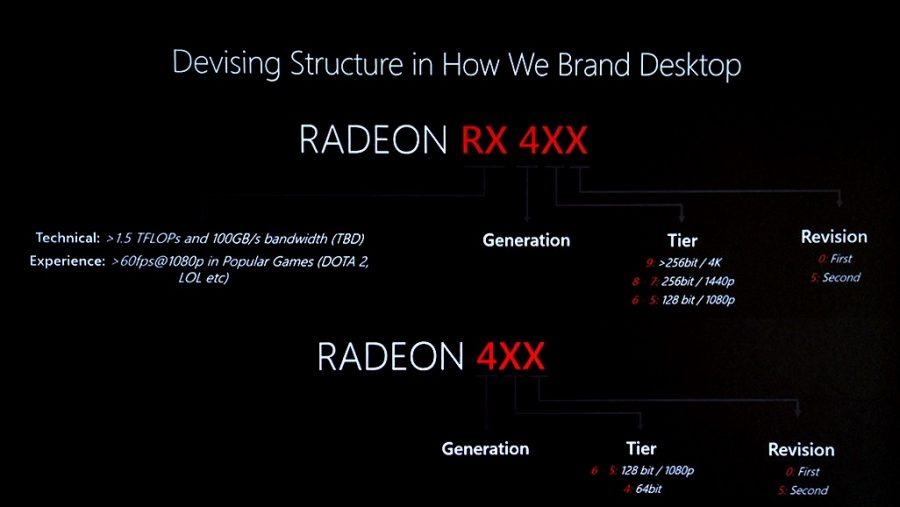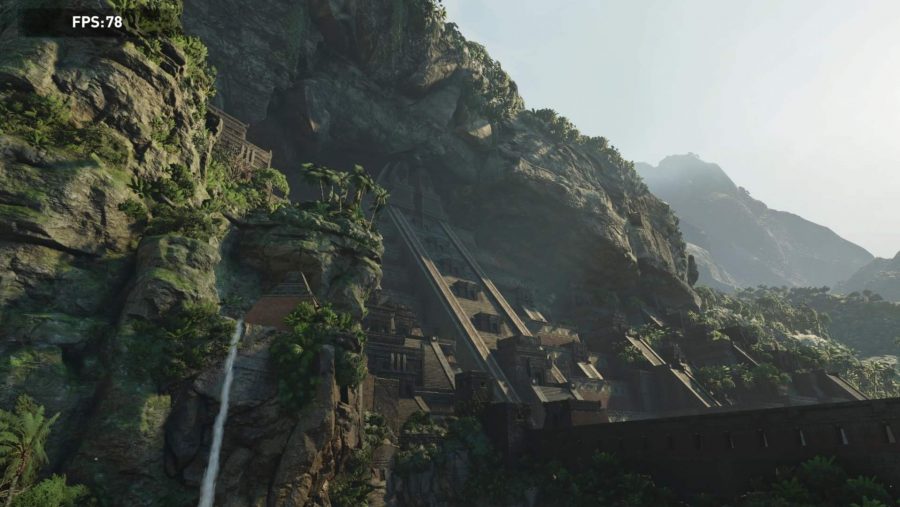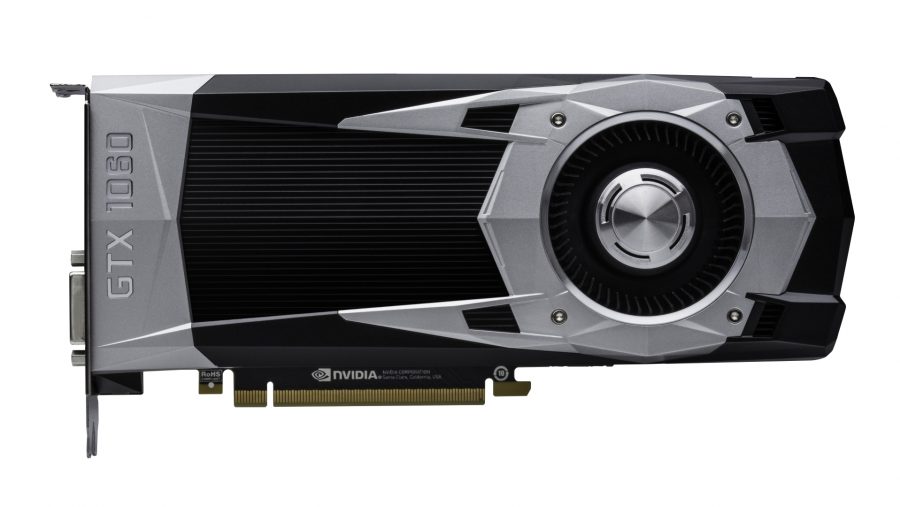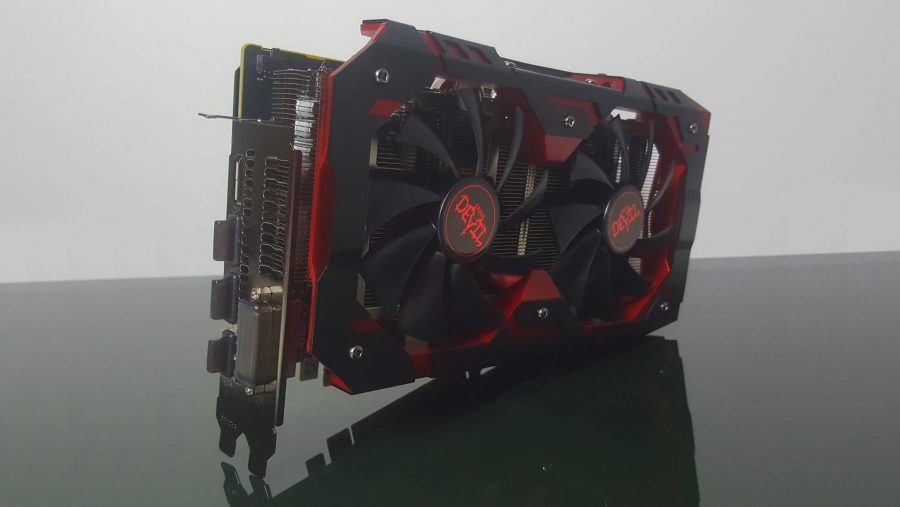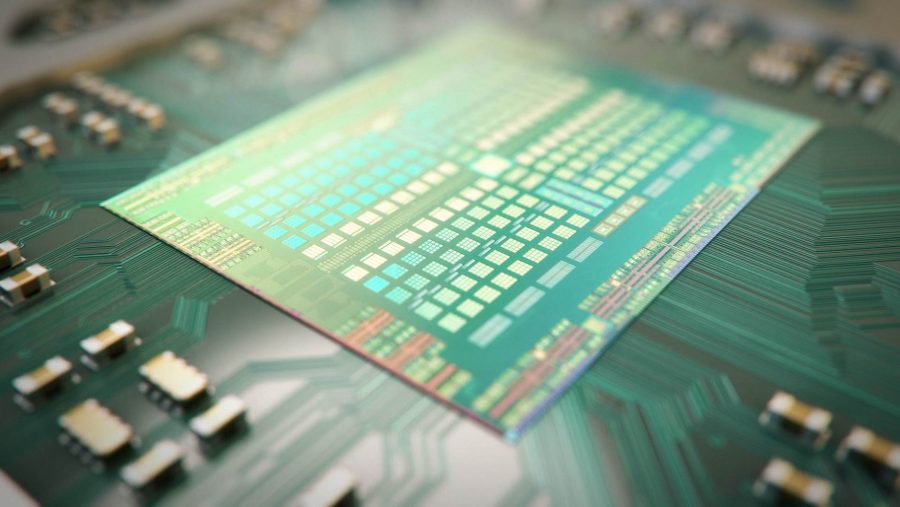Our Verdict
The RX 590 was a great idea... for a very short time. Now the GTX 1660 Ti has usurped it's performance crown in the sub-$300 market there's arguably no place for the latest Polaris card.
The AMD RX 590 is team Radeon’s first mainstream graphics card in years… and it’s more or less just an overclocked version of its best two year-old GPU from the Polaris range. But, while that means the RX 590 doesn’t sound particularly impressive on paper, it still represented a smart play by team Radeon in the only sector of the graphics card market it can really make a difference.
With Nvidia not looking to pull a mainstream GPU out of its latest 20-series, and the Turing architecture being stripped back for the mainstream GTX 1660 Ti only this year, the GTX 1060 stood alone as the only sub-$300 GeForce GPU around when the RX 590 launched. The market has now changed, the GTX 1660 Ti has brought GTX 1070-level performance to the same price point as the RX 590 and the RX 580 has slashed its prices.
The Radeon RX 590 therefore is now struggling to cope. It’s a card based on the same Polaris graphics silicon as the RX 580 – and sporting practically the same specs list – but with a little extra headroom thanks to a slightly updated process node from GlobalFoundries.
Yes, we’ve finally got the refreshed Polaris graphics cards we thought were going to arrive around the same time as the second-gen Ryzen chips last year. With the Ryzen CPUs being shrunk down to fit the 12nm production process, we expected AMD would take the same steps with its RX 580 and RX 570 cards, shifting them down from 14nm to 12nm.
That didn’t happen then – presumably because mining demand was still so high for its 14nm chips it didn’t need to do anything new – but it seems AMD wants to take advantage of the benefits of a GPU die shrink while we wait for the AMD Navi release in the summer.
AMD Radeon RX 590 specs
As less of a whole new GPU generation and more of a mild refresh, the RX 590 is a partner-based launch. That means there are no reference cards for us to test on release and so we have to make do with the cards that are actually going to be sold in the wild. Here that means a PowerColor RX 590 Red Devil, which is a slightly overclocked version, though still gives us an idea about how the reference-clocked versions will perform thanks to its secondary silent mode.
| AMD RX 590 | AMD RX 580 | Nvidia GTX 1060 | |
| Manufacturing process | 12nm | 14nm | 16nm |
| Die size | 232mm2 | 232mm2 | 200mm2 |
| Stream processors | 2,304 | 2,304 | 1,280 |
| Texture units | 144 | 144 | 80 |
| ROPs | 32 | 32 | 48 |
| Memory size | 8GB GDDR5 | 8GB GDDR5 | 6GB GDDR5 |
| Memory bus | 256-bit | 256-bit | 192-bit |
| TDP | 225W | 185W | 120W |
| Price | $279 | £250 | $210 | £195 | $250 | £220 |
At its heart, is still the same GPU that will be pumping pixels around any and every RX 590 released this year. The ‘new’ Polaris GPU is built using GlobalFoundries 12nm process node, while literally everything else is kept in place from the original RX 580 design. So much so, in fact, that AMD acknowledged in a recent briefing it’s entirely possible the RX 590 GPU could be completely pin-compatible with old RX 580 boards.
Certainly most of the RX 590 coolers seem to have been stripped from each company’s existing RX 580 cards, so it wouldn’t be a surprise to see the actual boards themselves being treated in the same way. There is some thought needed to be given to the new chip, however, as it does have a pretty hefty clockspeed bump over the old RX 580 GPU.
Share and enjoy: These are the best graphics cards of today
The fact the 12nm process and the GPU architecture itself has matured over the last couple of years means that AMD should be able to achieve high chip yields out of GlobalFoundries’ manufacturing. It also means it should be able to get more high-functioning silicon running at higher speeds than was possible when the 14nm Polaris chips first appeared. This is really where that 12nm process node comes in handy, offering enough headroom for AMD to produce a Polaris 30 GPU that is at least 205MHz faster than its predecessor. And in this chunky Red Devil trim that’s pushed to 236MHz faster out of the box.
Elsewhere it’s all very much a known quantity. The same 36 Compute Units, and therefore the same 2,304 Graphcs Core Next (GCN) stream processors, are in attendance. And that also means you get the same core configuration in terms of 144 texture units and 32 render output units (ROPs) as the ol’ RX 580.
On the memory side nothing has changed either. There’s just another 8GB of GDDR5 video memory on the board, running across an aggregated 256-bit memory bus. AMD isn’t going to be dropping a 4GB version into the market this time, however, preferring to leave that to the RX 570.
Admittedly that’s all a rather far cry from what AMD originally had pegged for an RX x90 card. When Polaris was first launched we were originally promised the RX 400-series would come with the standard RX 480, 470, and 460, with the range eventually top and tailed by and RX 490 and RX 450.
That RX 490 was supposed to be a 4K-capable GPU with a memory bus above the 256-bit mark, which obviously never came to pass. And the RX 590 isn’t really that either, this is every bit as mainstream a GPU as the RX 580 before it. But unfortunately AMD couldn’t simply call it an RX 580X (which would have made more sense) as it’s already shot its load on that nomenclature by allowing OEMs to use it for the graphics cards packed into their 2018 spring releases.
AMD Radeon RX 590 benchmarks
PCGamesN Test Rig: Intel i7 8700K, Asus ROG Strix Z370-F Gaming, 16GB Crucial Ballistix DDR4, Corsair HX1200i,
Philips BDM3275
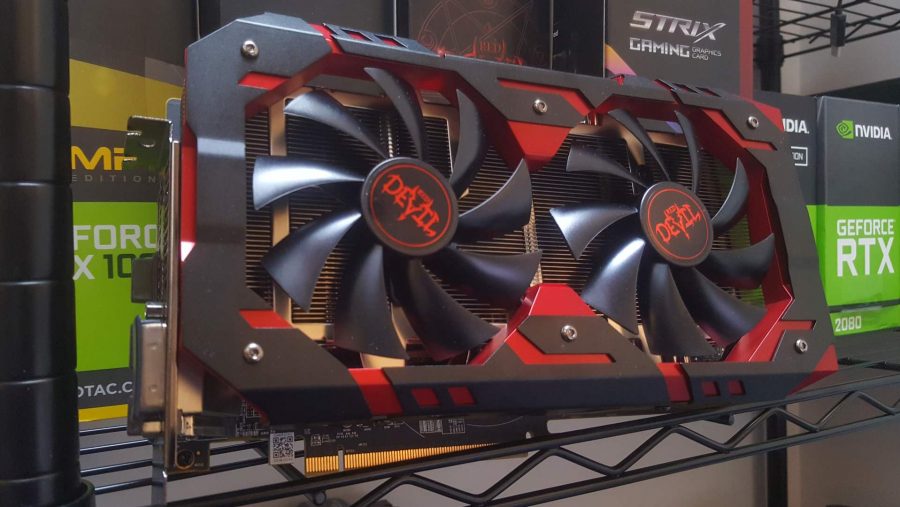
AMD Radeon RX 590 performance
The PowerColor Red Devil allows us to easily see how the reference-clocked cards perform, as well as this moderately overclocked version. There is a switch on the board which allows you to shift from OC Mode to Silent Mode. One runs the GPU at 1,576MHz under load and the other at the RX 590’s standard boost clock of 1,545MHz. And, to be honest, there’s not a lot of difference between them, which isn’t surprising given the paltry 31MHz frequency delta.
Perhaps more surprising, however, is that there’s not a lot of difference between the RX 590 and the old RX 580. We might have expected more of a performance gap given that pretty sizable extra clock speed bump, but with our testing the 8GB RX 580 is only ever a few fps on average behind. In fact it’s only in the DX12-based versions of the last two Tomb Raider games where there is any noticeable frame rate difference between the two Polaris GPUs.
Which also means there isn’t the extended performance lead over Nvidia’s competing GTX 1060 card we were expecting given the early benchmarking leaks of the last couple of weeks. There is still the same slight overall frame rate lead for the Radeon card over the GeForce GPU, but it hasn’t really changed a whole lot. For the most part graphical performance is still split down API lines, with the Nvidia card often performing better, or as well, in DirectX 11 games, and the AMD card taking the lead in DirectX 12 titles.
The extra AMD performance is most noticeable when you’re talking about higher resolutions, where the larger pool of video memory and wider memory bus, really comes into play.
Now the GTX 1660 Ti is here, however, the RX 590 doesn’t have things all its own way. Bringing GTX 1070-level performance into the sub-$300 GPU market means that the best Polaris card it ever released is now feeling the strain.
Outside of gaming the Nvidia cards definitely have the architectural lead in the power department too. The 120W TDP of the mainstream GeForce GPUs outstrips the power draw of even the 12nm GPU node AMD has used for the RX 590’s Polaris GPU. AMD has given a 225W TDP for the new RX 590, but while the RX 580 has a lower 185W TDP the RX 590 demands less overall power even in PowerColor’s overclocked trim. Though both cards are still far more thirsty than the Nvidia card.
But the RX 590, particularly this Red Devil version, is a lot cooler than the reference version of Nvidia’s GTX 1060. The fans only spin up when they absolutely have to, and even when they do they’re remarkably quiet, leaving only the telltale AMD coil whine squealing in the wind. Or whatever that teeth-tingling electrical noise actually is…
AMD Radeon RX 590 verdict
The RX 590 was the most powerful mainstream, sub-$300 graphics card in the market until the GTX 1660 Ti turned up. AMD updated its top Polaris card with the most minor of upgrades and that was enough to just about push it ahead of the competition. Now that Turing finally has a mainstream GPU of its very own AMD’s lead has withered away.
That said, it’s not the only card we’d recommend you buy from that mainstream GPU segment. Sure the GTX 1660 Ti is the fastest sub-$300 card, but the RX 580 is the price/performance darling right now. The 14nm Polaris is retailing for less than its original sticker price for the first time since the mining boom. At under $200 the RX 580 is a fantastic graphics card, often outperforming the GTX 1060 and undercutting it in price too. Despite its far higher clock speed, the RX 590 isn’t actually that much quicker than the ol’ RX 580.
The only sticking point might be that the RX 580’s days are numbered, with the RX 590 likely to eventually replace it. Until then stock is still strong for the RX 580, and prices pleasingly low. Of course there is the tantalising prospect of the 7nm Navi GPUs in the first half of 2019 as the next GPU generation to entirely replace Polaris.
If you’re not desperate for a new GPU right now there is an argument for holding off buying a new graphics card entirely to see how the Navi vs mainstream Turing debate goes down this year. Nvidia’s GTX 1660 Ti means that we now have a sub-$300 GPU with GTX 1070-level gaming performance, but Navi has the potential to really shake things up in the summer. But we’ll have to wait and see on that one.
But all that means the RX 590 is a bit of a lost sheep… sorry, graphics card. There isn’t really a place for it in our world any more. Unless you’re one of the vocal tribalists who buy purely on the basis of a badge, there’s no reason to buy the RX 590 over the GTX 1660 Ti.
Both are still relatively pricey in terms of genuine mainstream graphics cards, which means the RX 580, with its sub-$200 price tag, is still the go-to GPU for those of us on a tighter budget.
